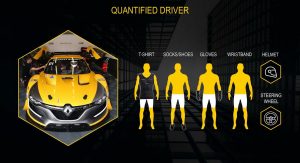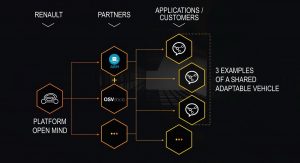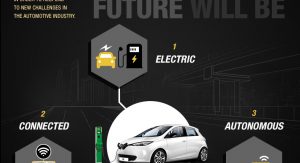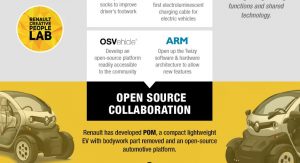Four Renault strategic technology partners, OSVehicle, ARM, Pilot and Sensoria, will present new open-innovation and open-source projects at this year’s Consumer Electronics Show.
Thanks to this open approach, Renault and its partners are looking to explore the always-changing automotive landscape through early hardware and software modification.
“Renault has been making cars for more than 100 years and our industry is changing rapidly,” said Pierrick Cornet, Renault’s VP of Engineering. “Being able to work in all new ways, incorporating new technology with new scenarios in mind, ensures we’re constantly exploring new areas of transportation, connected cars, zero emissions and an easier life for our customers. “CES is one of the world’s great stages for what’s next in consumer technology and we’re excited to be here with our partners and through the Renault-Nissan Alliance.”
With that in mind, Renault has created the world’s first open-source mass market vehicle. It’s based on the Twizy and will be available to start-ups, independent laboratories, private customers and researchers, allowing third parties to copy and modify existing software in order to create a completely customizable EV, with the assistance of OSVehicles.
OSVehicles also provides on-demand design and engineering services, bringing together entrepreneurs, developers, designers and engineers – making it easier to build, share distribute and modify the hardware designs of electric vehicles. Also, by working together with ARM, Renault will open up the Twizy software and hardware architecture to allow new features. The ARM architecture will be able to address multiple technology needs such as autonomous driving, advanced cockpits and connected car system.
Another partner for Renault is Pilot, a retail supplier of mobile electronics and automotive accessories. By using their own expertise in electric mobility and combining it with Pilot’s Light Pulse Cable technology, Renault has managed to create the world’s first electroluminescent charging cable for electric vehicles, which is what you see in the opening image.
Then you’ve got the likes of Sensoria, which partnered with Renault to develop sensitive socks to improve a race driver’s footwork. How this works is that the information gathered by the connected socks is transmitted to an app that records various parameters such as speed, acceleration and braking, allowing you to assess your performance on the track.








